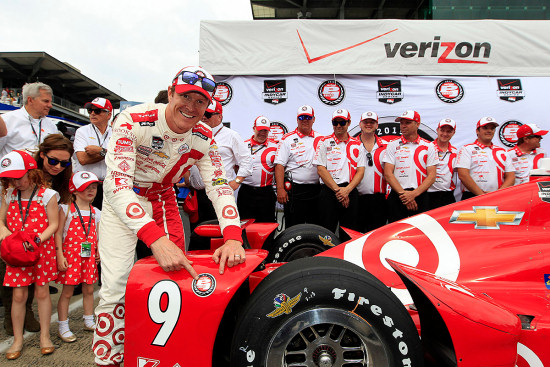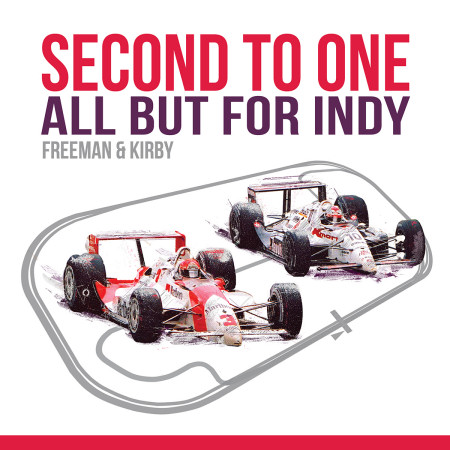The Way It Is/ Mired in a media backwaterby Gordon Kirby |
 Will IndyCar's aero kits achieve the goal of sparking renewed interest in American open-wheel racing? It's too early to tell, but the early returns in crowds, TV ratings and media coverage as a whole have been disappointing while the problems that reared their heads at Indianapolis last week suggested that IndyCar failed to do its homework or conduct a proper, thorough aero kit test program. Better to give it more time before casting any judgement but the fact is IndyCar's problems run much deeper than aero kits.
Will IndyCar's aero kits achieve the goal of sparking renewed interest in American open-wheel racing? It's too early to tell, but the early returns in crowds, TV ratings and media coverage as a whole have been disappointing while the problems that reared their heads at Indianapolis last week suggested that IndyCar failed to do its homework or conduct a proper, thorough aero kit test program. Better to give it more time before casting any judgement but the fact is IndyCar's problems run much deeper than aero kits.
IndyCar's long slide into irrelevance has reached a critical stage and from my perspective it's impossible to ignore the continuing decline in the number of writers working in the media center at Indianapolis this month and at all IndyCar races in general. At Long Beach last month I counted no more than fifteen 'working journalists' in the media center on race day. The only newspapers represented were the Long Breach Press Telegram, the LA Times, and Curt Cavin writing for both the Indy Star and USA Today. In the old days Long Beach was covered by California newspapers from San Diego to San Francisco and there were other writers from cities further afield such as Phoenix, Cleveland, Toronto, Vancouver and Montreal. Through CART's Nigel Mansell and Alex Zanardi eras in the nineties Long Beach's press room was also jammed with scores of newspaper and magazine writers from the UK and Italy, as well as Europe in general. The press room back then was full of noise, chatter and buzz as stories were filed around the world. There was a fierce note of irreverence and good humor with laughter all-round. These days, the media centers at Long Beach and Indianapolis are almost as quiet as a mausoleum, devoid of boisterous or irreverent talk. Compared to Indy car racing's international CART era the remaining media is a very timid and pedestrian crowd.  © Mike Levitt/LAT USA Rene was at Long Beach primarily to interview Arie Luyendyk for a story celebrating the 25th anniversary of Arie's first win at Indianapolis in 1990 with Doug Shierson's team. Rene said it's become almost impossible to sell stories about all forms of American racing in Europe, NASCAR included, and I agree. To further emphasize the point, the only European visitor covering last weekend's qualifying runs at Indianapolis was German writer Wolfgang Monsehr, a stunningly sad contrast to the international media boom years sparked by Nigel Mansell for a few years more than twenty years ago. From my own point of view I can report that there's little or no interest in any contemporary American racing from the editorial team at Motor Sport in the UK. The last feature I wrote about IndyCar for Motor Sport was Montoya's move to Penske at the end of 2014. Any coverage of IndyCar or the United SportsCar series in Motor Sport is confined to my one page column each month. Unless something revolutionary occurs the magazine has no interest in either series. In fact at the end of last year, Motor Sport's web editor asked me to stop covering the IndyCar races--Indy 500 excepted--on the magazine's website because of the lack of interest in the series. I've remarked to a few people, Derrick Walker included, that it should be an urgent message to IndyCar when the world's oldest and finest racing magazine tells the world's second longest-running Indy car writer to forget about covering the series anymore. I'm at a loss to suggest any solutions for IndyCar to reverse its continuing decline in media coverage. Sad to say, IndyCar and the TUSC have become two of the smallest, least covered sports in America today, and both of them face tremendous challenges in re-making themselves as respected players in America's sports and entertainment culture. The TUSC is working hard to publicize itself. IMSA pr man Nate Siebens does a great job churning out the news and veteran journalist Stephen Cole Smith is covering the races for IMSA but the TUSC struggles with even less mainstream coverage than IndyCar.  © Icon Publishing Since 1973 I've had the pleasure of writing 42 American season reviews for Autocourse. My annual review of NASCAR, IndyCar and the TUSC fills the final dozen or so pages of the book and the startling thing is that for the past ten years it's been the only review of the American racing season published between hard covers. Autocourse celebrates its 65th anniversary next winter and sad to say, there's nothing remotely like it here in the United States. Once upon a time, half a century ago, the likes of Road & Track, Car & Driver and Sports Car Graphic devoted many pages to covering motor racing. Phil Hill, Dan Gurney and Jim Clark frequently graced the covers of such magazines while the New York Times covered the European and worldwide exploits of the likes of Hill, Gurney and the Ford and Chaparral teams. During the same time American stars like A.J. Foyt, Parnelli Jones, Mario Andretti, Mark Donohue and Bobby and Al Unser rose to similar prominence and enjoyed real status in the popular culture of the day. But today, IndyCar's TV numbers are so tiny and its media centers are so empty that current open-wheel stars such as Will Power, Scott Dixon and Ryan Hunter-Reay are unknown to the general public. The upheavals brought by the internet to the print media business in the past ten years have added to IndyCar and the TUSC's problems in attracting mainstream media coverage. NASCAR has also suffered a decline in media in recent years but is holding steady and enjoys a much healthier traveling media corps than IndyCar or TUSC. Without doubt, today's changing media business models have adversely affected NASCAR and Formula 1 too, but if you were to walk into an F1 media center jammed with a couple of hundred or more writers and photographers--most of them regulars covering the majority of the races for magazines, newspapers, websites, television, radio, et al. around the world--you would begin to absorb F1's continuing global strength and understand how and why it totally outstrips IndyCar. Next weekend's 99th Indy 500 will draw a reasonable crowd to the media center on race day, but it will be nothing like a current F1 race or the 500's heydays twenty and more years ago. This past weekend's qualifying runs drew a meager collection of fewer than forty working journalists to the Speedway's media center and the rest of IndyCar's schedule staggers on, like Long Beach or worse, with a tiny collection of local and traveling media putting out a small and insular message. Having covered American open-wheel and sports car racing's ups and downs for 42 years I'll continue to watch with interest to see if IndyCar or TUSC can do anything to reverse the tide and begin to build larger media footprints and brand identities in the coming years. They face a giant and daunting challenge.  © Racemaker Press Included in this select group of forty are great names such as Earl Cooper, America's first three-time National Champion; Harry Hartz, a national title winner who finished second no fewer than three times and became a winning car owner; Lou Moore, whose team would later enter winning cars for three straight years; plus many great champions such as Ted Horn, Rex Mays, Tony Bettenhausen, Eddie Sachs, Len Sutton, Dan Gurney, Michael Andretti, Paul Tracy and a host of others. 'Second to One' is the first comprehensive history of the Indy 500 published for a number of years. The book provides an intriguing human look at the 100-year history of the race and fills 303 pages with more than 400 photographs, many from the Racemaker Archive and collections of well-known Speedway photographers such as David Knox, Walter Chernokal, Dennis Torres, Dan Boyd, Mike Levitt, Paul Webb and numerous others. I couldn't have contemplated tackling 'Second to One' without Joe Freeman. The book was Joe's idea and he has written the first half the book from 1911 through the mid-fifties. Joe is a thorough-going historian who is deeply knowledgeable about the sport's first five or six decades. He's done on excellent job on his half of the book and I hope I've held up my end of the bargain with the second half. Joe and I will sign books on Friday evening (May 22nd) at the IMS Museum between 6-8 pm and we will also have copies of 'Second to One' available for $75 at the Speedway's Memorabilia Show on Saturday. Also, Jim McGee will join us at both the Museum on Friday evening and Saturday's Memorabilia Show to sign copies of my most recent book 'Jim McGee: Crew Chief of Champions'. Joe, Jim and I look forward to seeing at least some of you there. |
|
Auto Racing ~ Gordon Kirby
Copyright ~ All Rights Reserved |
